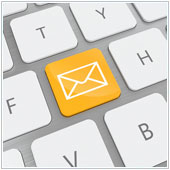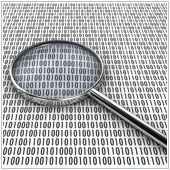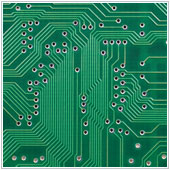Computers are incredibly useful, however they are also complex beyond belief. This is made even more so because of the large number of confusing acronyms, words and terms. If you read tech blogs, or have friends/colleagues who are in-the-know, you have likely heard them mention overclocking and may have wondered what it is, and if you should be looking into it.
Here's a brief overview of overclocking.
Definition: Overclocking When it comes to most tech based devices, the processor (or CPU) is the integral component that functions as the brain of the device; it runs the show. The job of the CPU is to take instructions and input from all the other devices and components and execute them. For example, double-click on a program on your desktop and the CPU computes what to do with the mouse click (open the program), and runs the related code, which is shown as the program opening.
One thing many computer sales people talk about is processor or CPU speed. This is the number of instructions it can run in one second. These instructions are grouped together into one cycle, and one cycle per second equates to a Hertz. You may see computers that have 2Ghz processors, this means 2 Gigahertz or 2,000,000,000 cycles in one second.
Now, when manufacturers release a new CPU they design it to run at a standard, or optimal speed, and will generally limit it. This is done to preserve the life of the components, however there are often ways to break this speed limiter. When you raise the maximum clock speed, beyond the intended clock speed, you are overclocking it.
Why overclock? The main reason users overclock a processor is to make their computer or device run faster. By overclocking, programs will often run or open faster and the general operation will seem smoother. In other words, you can get more out of existing technology without paying to upgrade.
Are there any drawbacks? While overclocking will give you more power and speed, there are some serious drawbacks that make this option risky. The biggest being heat. As you probably have noticed, when you use some devices (say a laptop on your lap) for an extended period of time, they get warm. That's because the components of computers create heat, lots of heat. When you overclock, the processor works harder, thereby generating more heat.
Computers are designed to operate at certain temperatures and if this level is surpassed, the components can wear out more quickly or in extreme cases melt. This means that overclocking will cause your computer's parts to wear out quicker and will decrease the life of the device.
Should we overclock our devices? Did you know that you can overclock nearly anything with a processor? The most common are computers and new smartphones, especially Android devices. When you hear people talking about overclocking their device, they are almost always talking about personal devices.
While it's true, you will get a speed boost in the short run, overclocking will increase your IT budget in the future, because you will have to replace parts more often than is usual. Because most businesses tend to use their technology longer than personal users, any action that causes tech to wear out more quickly is not a good idea.
That being said, you can also do the opposite of overclocking. Underclocking is telling a computer's processor to run slower than it's designed speed. This will increase component life but decrease processing power, and could be beneficial for companies that have new computers and don't need intensive computing resources.
Before you take any actions however, it is best to talk to us, as we may have a better solution for you and one that will cost less.

 Business owners and managers have many concerns they must address on a regular basis, or at least be aware of. Some of security concerns revolve around fraud, more specifically email fraud. While this isn't a new concept, email fraud and scam occurrences are on the rise, and it is vital to know how to spot them.
Business owners and managers have many concerns they must address on a regular basis, or at least be aware of. Some of security concerns revolve around fraud, more specifically email fraud. While this isn't a new concept, email fraud and scam occurrences are on the rise, and it is vital to know how to spot them. It can be argued what the most important invention of the last 100 years has been, but many would agree that the computer has to be among the top. These complex machines helped usher in the information age. Unfortunately, they come with a downside: Destructive malware such as viruses have become a major problem for businesses because viruses have been built up to such mythical proportions that many users simply don't know fact from fiction.
It can be argued what the most important invention of the last 100 years has been, but many would agree that the computer has to be among the top. These complex machines helped usher in the information age. Unfortunately, they come with a downside: Destructive malware such as viruses have become a major problem for businesses because viruses have been built up to such mythical proportions that many users simply don't know fact from fiction. Email has become the go-to communication medium for businesses of all sizes. It's not uncommon to see people emailing one another when they could just as easily talk. While it is incredibly popular, many emails are poorly written, leading to confusion and both parties having to take time out of their busy days to clarify. This can make you unproductive, and the best way to stop this is by writing good emails to begin with.
Email has become the go-to communication medium for businesses of all sizes. It's not uncommon to see people emailing one another when they could just as easily talk. While it is incredibly popular, many emails are poorly written, leading to confusion and both parties having to take time out of their busy days to clarify. This can make you unproductive, and the best way to stop this is by writing good emails to begin with. When it comes to operating a business, you are always walking a fine line, trying to balance costs and profits. This means you are probably eager to cut costs whenever possible. One area that has likely demanded a large investment is technology. The problem with technology is that it can be hard to keep costs at bay, especially when it breaks down.
When it comes to operating a business, you are always walking a fine line, trying to balance costs and profits. This means you are probably eager to cut costs whenever possible. One area that has likely demanded a large investment is technology. The problem with technology is that it can be hard to keep costs at bay, especially when it breaks down. Communication is an important part of business, and one of the more popular communication mediums is Facebook. It's hard to find a business that doesn't use the platform. If you have been using Facebook since its launch you will know that there are occasional changes that sometimes make it better, others worse. The company has recently announced changes to the layout of your News Feed - are they any good?
Communication is an important part of business, and one of the more popular communication mediums is Facebook. It's hard to find a business that doesn't use the platform. If you have been using Facebook since its launch you will know that there are occasional changes that sometimes make it better, others worse. The company has recently announced changes to the layout of your News Feed - are they any good? Data: A set of values that belong to a set of items, is important to every business; it is largely useless in it's raw form though. Through the use, manipulation and analysis of data we get useful information that we can use to make decisions, gauge the health of our company or even tell how popular our Facebook Page is. While it is important, data can be hard to analyze without the right tools.
Data: A set of values that belong to a set of items, is important to every business; it is largely useless in it's raw form though. Through the use, manipulation and analysis of data we get useful information that we can use to make decisions, gauge the health of our company or even tell how popular our Facebook Page is. While it is important, data can be hard to analyze without the right tools.
 Presentations containing charts and graphs are a part of every business - some managers give presentations on a daily or weekly basis, while others do it once in a blue moon. The tool most business owners use to create and deliver presentations is Microsoft's PowerPoint. While PowerPoint is great, it isn't exactly easy to put a chart or graph into any presentation, or is it?
Presentations containing charts and graphs are a part of every business - some managers give presentations on a daily or weekly basis, while others do it once in a blue moon. The tool most business owners use to create and deliver presentations is Microsoft's PowerPoint. While PowerPoint is great, it isn't exactly easy to put a chart or graph into any presentation, or is it?
 One of the more popular debates about the Internet is who exactly owns your data and information when it goes online? Most of the information regarding this is held in the Terms of Service, which most people click and agree to without reading. The interesting thing about this is that web oriented companies usually update their policies on regular basis and often introduce changes you may not be aware of. With so many websites, it can be a chore to keep track of all these changes, luckily there is an online database that makes this easy.
One of the more popular debates about the Internet is who exactly owns your data and information when it goes online? Most of the information regarding this is held in the Terms of Service, which most people click and agree to without reading. The interesting thing about this is that web oriented companies usually update their policies on regular basis and often introduce changes you may not be aware of. With so many websites, it can be a chore to keep track of all these changes, luckily there is an online database that makes this easy. The computer is one of the most important inventions of the past century. While it is a magnificent machine, most users treat their computers like a black box. We know how to use it, but little do we know about what is inside. It's these components that allow us to communicate, run businesses and yes, even surf Facebook. As such, it could be beneficial to know a little bit about the internal workings of the modern computer.
The computer is one of the most important inventions of the past century. While it is a magnificent machine, most users treat their computers like a black box. We know how to use it, but little do we know about what is inside. It's these components that allow us to communicate, run businesses and yes, even surf Facebook. As such, it could be beneficial to know a little bit about the internal workings of the modern computer.
